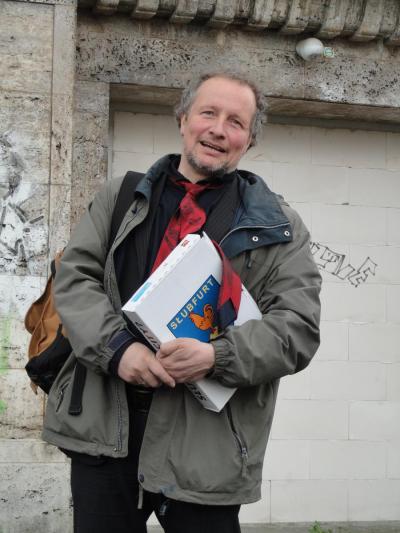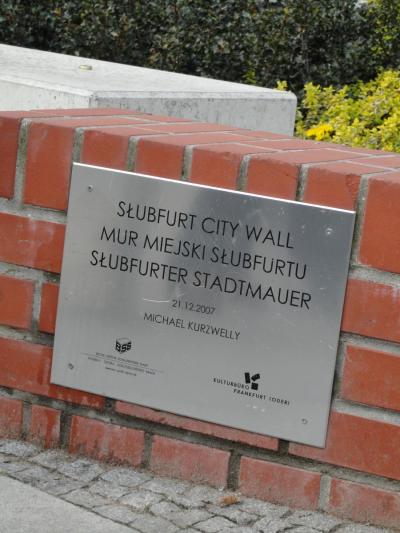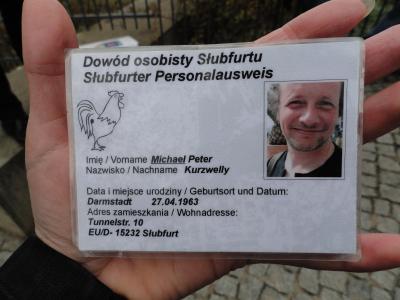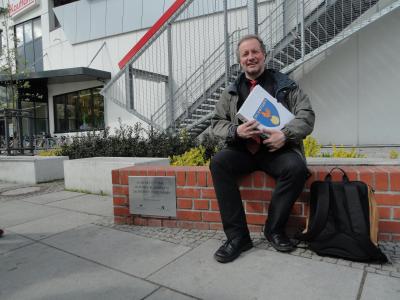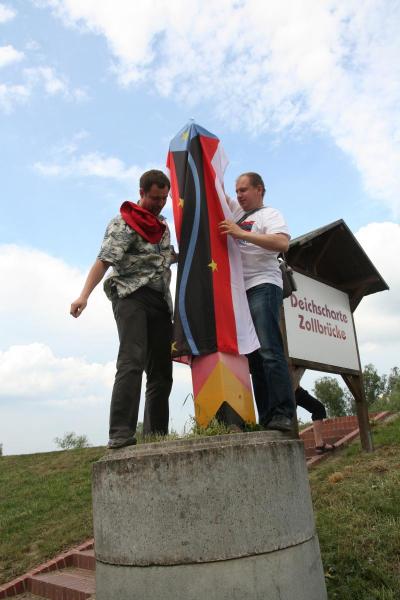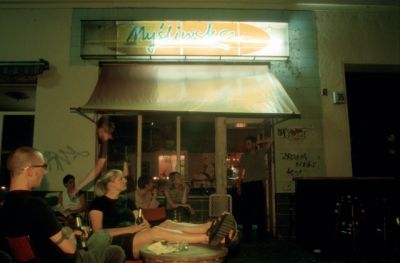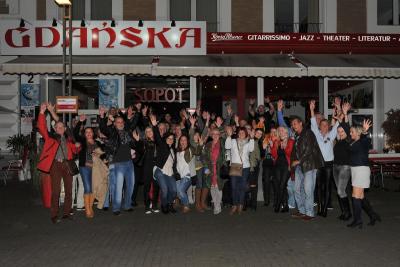Słubfurt and Nowa Amerika
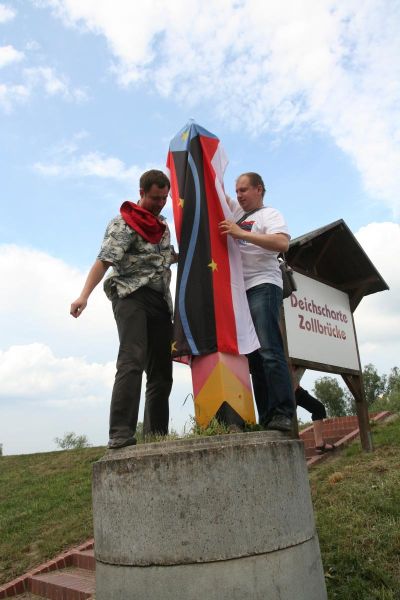
To live up to the myth of the early days, the country was called “New America”. The villages and colonies were given exotic names: New Hampshire, Neu Yorck, Florida, Maryland, Jamaica and Sumatra. Today these names can no longer be found on any map. After the World War II, the village of Savannah was renamed Czubkowo, the Pennsylvania colony was named Polne, Hampshire became Budzigniew, Jamaica Jamno, Quebeck Boguradz and Florida Sadowice.[3] Only the village of Malta (in the district of Sulęcin, Lebus county), was spared from changing its name. Hence it still commemorates the unusual history of colonisation in the 18th century.
As far as the creators of Nowa America are concerned: “This unusual story has inspired us to call our new territory connecting the (...) borderland, 'Nowa America', a land of pioneers and people hungry for freedom who want to create a new civil society together and who recognize that this is our Promised Land”.[4]
In 2015, the term “Promised Land” became particularly important. When a wave of refugees came to Germany that year, many them arrived in places close to the border. Increasing prejudices against “new” and “foreign” arrivals became noticeable on both sides of the border, so that the artists began to regard social mistrust as a challenge. Projects were set up to help the refugees find their way into their new reality and to help the local inhabitants to get used to their new neighbours. There were several meetings with refugees under the title “What kind of people are these?” (“Co to za jedni?”). These familiarized local young people with the living conditions, the fates and the origin of the migrants. In a workshop entitled “We are all migrants” (“Wszyscy jesteśmy migrantami”), a group from the village of Boruja Kościelna discussed the reasons for border shifts and migration in the region. Similar events were organised for the refugees who got to know the Sorbian culture in Bautzen, among others.
One thing is particularly important to the “Nowa-Americans”: to improve the bad image of the border region. “Everyone is complaining how bad things are here and that there are no prospects,” says Andrzej Łazowski, a photographer and co-founder of “Nowa Amerika”. “The Germans go to West Germany and the Poles move to larger cities or abroad. Our activities aim to show that the German-Polish border region is a great place for creative people. All you have to do is to stop moaning.”
Monika Stefanek, February 2018
Słubfurt online: www.slubfurt.net
Nowa Amerika online: nowa-amerika.eu
[3] The article is online at: http://szukajwarchiwach.pl/66/125/0/str/1/15#tabZespol
[4] Internet: www.slubfurt.net
